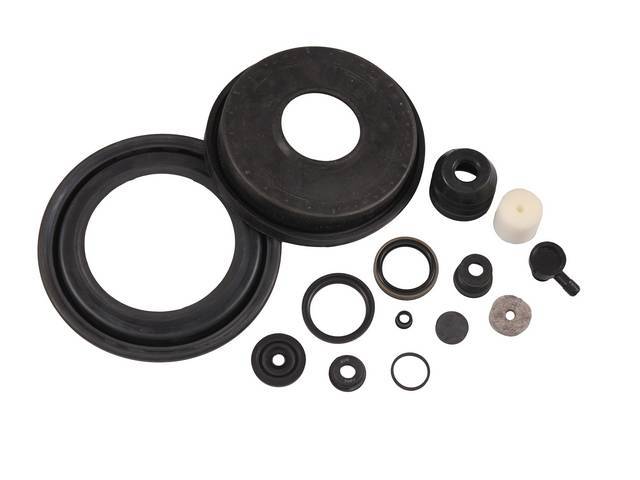

The arm rotated valves to close an atmospheric valved and open a vacuum valve, pulling vacuum air into a large chamber and pushing a bellows against a valve in the slave cylinder to increase fluid pressure to the wheels.

More pressure activated a valve that, in turn, activated a triangular arm.
#BRAKE POWER BOOSTER REBUILD KIT DRIVER#
In the Hydrovac system, when the driver pressed the brake pedal, fluid pressure was increased to a slave cylinder and the wheel cylinders. Systems such as the Hydrovac, the Hydroboost, and the Treadle-Vac (known as the Easamatic on 1952-1956 Packard) came factory-installed. Drum Brakes remained standard because they worked well and were cheaper to manufacture than disc brakes.īeginning the 40’s other power-assist systems began to appear. Chandler cars, from 1927-1929, came with a Westinghouse Vacuum Booster, and by the early-30’s, Lincoln, Cadillac, Duesenberg, Stutz and Mercedes were also including vacuum-assisted drum brakes. The intake manifold supplied the vacuum needed to reduce the amount of effort required to apply the brakes. In the mid-20’s Caleb Bragg and Victor Kliesrath had invented the vacuum-assisted brake booster for the aeronautics industry. The 1928 Pierce-Arrow was the first production car to come with a vacuum-operated power booster for brakes (the Bragg-Kliesrath). A small pump compressed air to stop the car, or, if you wanted, the same pump could inflate the tires or toot the whistle. Brake assist, for instance, was first made available in 1903 with the Chicago-based Tincher. Some early innovations with brakes now seem way ahead of their times.


 0 kommentar(er)
0 kommentar(er)
